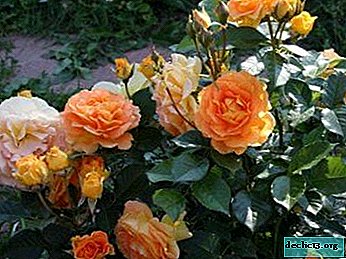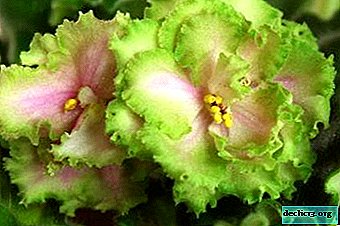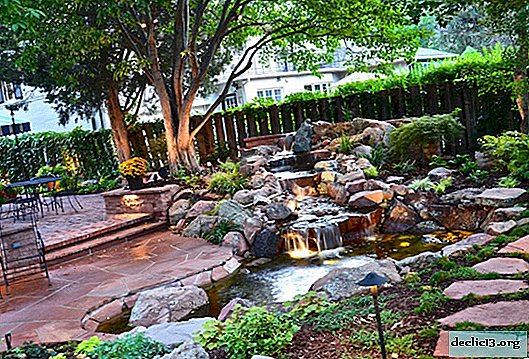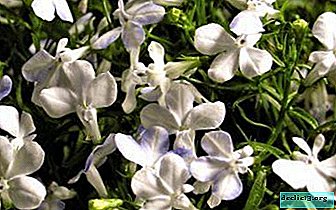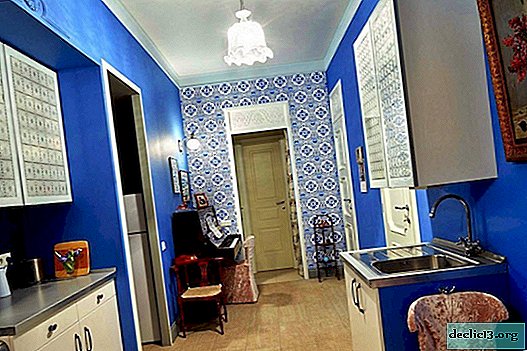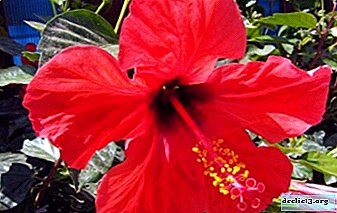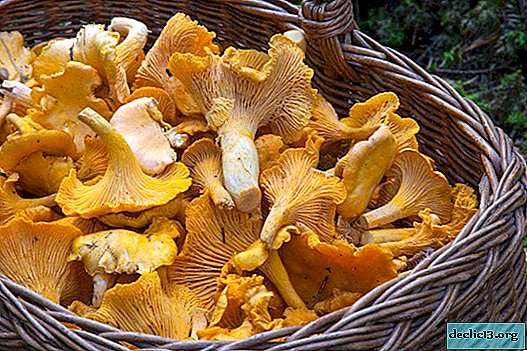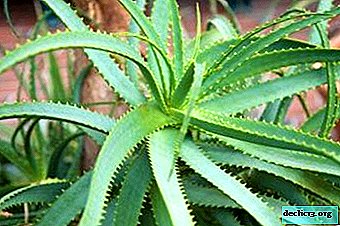A flower with an interesting name is Crassula Ovata Gollum (The Hobbit). What is it like growing at home?
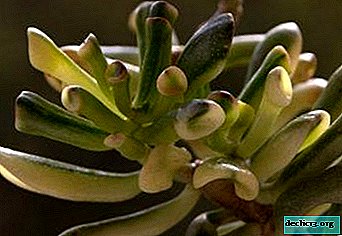
Succulents of the southern part of the globe have long "taken root" on the windowsills, have become their permanent inhabitants. Interesting, sometimes - intriguing appearance, undemanding to the conditions of detention, a large number of different species and varieties - the reasons why these plants are loved by flower growers.
Let's talk about growing and caring at home for the rosacea of the Gollum ovate ("The Hobbit") - a cultivar where attractive and entertaining plants lie behind the "fantasy" name.
Description of this variety of Crassula
Crassula ovata Gollum (Hobbit) is a variety of succulent plants from the family Crassulaceae Crassula ovoid (oval). Crassulas (Crassulaceae) grow in arid and rocky areas, highlands of the southern hemisphere. Succulent plants store water "for the future" in their juicy shoots, thick pulp of leaves.
Crassula Gollum (Hobbit) is a hybrid variety of Crassula, bred by American breeders in the 70s of the twentieth century. The basis for the new variety form of steel is believed to be Crassula ovata and Crassula lactea (milk). In general, visually the plants resemble the "classic" oval oleracea. At first it is a shrub with juicy shoots, then, as it grows, the trunks and branches are lignified. It can be cultivated in the form of both a bush and a tree. In nature, grows up to 180 cm, at home, it can reach a height of 80 cm.
Differences from ovate rossula - primarily in the leaves. In Crassula gollum (the hobbit), they can be in two versions. In the first, the leaves are turned outward and fused from the base to the middle. The second option is characterized by the complete fusion of leaves into tubules, which expand upward, like funnels. The tips of the leaves are green, often with a reddish tint. There are also variegate forms with a varied color of fleshy succulent leaves.
These are very decorative and pretty plants are easy to grow, they are unpretentious and do not need to create special conditions for successful development. Crassula ovata Gollum (Hobbit) blooms in small pinkish flowers collected in inflorescences. Like other variations of the ovate crassula, the "hobbits" are able to live on the windowsill for a long time (two decades or longer), delight the owners and surprise guests.
Photo
Look further down at the photo of the money tree called Crassula ovata Gollum (Hobbit).





Home Care
| lighting | It needs a fairly bright and long daylight - at least a few hours a day. |
| temperature | From 20 to 25 degrees Celsius in the spring and summer, when there is an active vegetation. In the cold season, it needs wintering at 10-15 degrees Celsius. |
| location | Optimally placed on sunny windows (south, southwest, southeast). In summer, you can take to the balcony, to the courtyard. |
| watering | It is very important not to overfill, in spring and summer watering as the soil dries, in winter - once a month or a little less, focusing on the state of the plant (if the leaves dry and wrinkle - you need extraordinary watering). |
| air humidity | It does not need special humidity conditions; this plant comes from arid, hot areas. Spraying, wiping leaves from dust - is welcome. |
| top dressing | A special fertilizer for cacti and succulents a couple of times a month in the phase of active vegetation. It is best to combine with watering. |
| the soil | Soil is needed not too nutritious, loose, well-drained. You can use purchased soil for cacti and succulents, or make your own mixture of turf land, leaf land and sand. Add pieces of broken brick for drainage, a small amount of zeolite and coal to prevent root decay. |
| pruning | Pruning is done to form a plant to your liking. You can just cut the shoots, forming a crown, or you can even radically cut the trunk of a young plant and grow a bonsai shape. |
Breeding
Reference. Crassula ovata Gollum (Hobbit) propagates in many ways: cuttings, leaf, processes with aerial roots, division of the bush. Everything is moving. Accidentally broken off leaf, cuttings remaining after trimming to form the desired crown shape - use them to propagate the plant.However, it must be said that the easiest and most popular way is still cutting. Seeds are too long and difficult, the rooting of the leaves also has its own specifics, but a stalk about ten centimeters long is what you need.
Tighten the stalk slightly in the shade, then place in a glass of water (it is worth adding charcoal to avoid decay). When the roots appear, you can plant the plant in a small container with suitable soil. A little fat girl should get enough light, and you need to moisten the soil daily, unlike adult specimens.
Transfer
 You can transplant young Crassula once a year, each time slightly increasing the capacity. An adult plant is transplanted about once every three years or less.
You can transplant young Crassula once a year, each time slightly increasing the capacity. An adult plant is transplanted about once every three years or less.
Do not damage the delicate root system. The fat girl needs to be removed from the pot along with a lump of earth on the roots and in this form should be moved to a new container. If it is difficult to remove, tap on the bottom and walls of the pot. Do not get carried away with the volume when transplanting the crassules: they do not need very large and deep containers. It is better to take a relatively shallow pot with a diameter slightly larger than the plant itself.
Possible difficulties
Crassula gollum (the hobbit) is an unpretentious and modest plant in needs. It grows rather slowly, rarely blooms (it may not bloom at all if you do not spend cold wintering competently).
- Crassula may suffer, above all, from overflow. Therefore, here, as they say, it is better - less.
- Lack of sunlight can also negatively affect the condition of the plant. But even burns from direct sunlight, if the fat woman spends the summer in the yard or on the balcony is not better. Need to create a balance. Organize a light shade if necessary.
What are similar plants?
- Crassula lactea. Crassula is milky. One of the ancestors of the hybrid variety of oat oat “Gollum (Hobbit)”. This species has only a hint of splicing leaves a la "gollum" - they grow together at the base. The plant is small (up to 60 cm in height maximum). Delicate wide rounded leaves, white flowers - a very nice copy in the collection of a succulent grower!
- Crassula portulacea. Crassula Purslane. Also popular is succulent with elongated, obovate leaves on thick stems. It is decorative and practically obligatory in the collection of home succulents of the genus Crassulaceae.
- Adromischus halesowensis. Adromiscus Halesovensis. If you like the exotic, somewhat “alien” look of “gollums” (“hobbits”) and want something like this in a collection, then adromiscus will be to your liking. Elongated, voluminous, glossy leaves stretching in different directions give this bush a peculiar, special charm.
- Peperomia graveolens. Peperomia gravity. A cool plant with thick oblong leaves folded into "boats". The form is not everything: the leaves above are green and the bottom are red. Decorativeness is over the top!
- Hatiora salicornioides. Hatiora is saltwater. Epiphyte cactus. Its branchy green shoots resemble horns and look like cute hobbit leaves. If you liked Crassula of the Gollum variety and would like something else in the spirit in the collection, the hator will definitely suit you.
Crassula ovata Gollum (Hobbit) is a truly non-standard sortoform with absolutely amazing leaves. Such plants look at the same time original, cute and touching. This unusual combination with the usual simple care routines for fat women makes them very attractive for indoor gardening.

